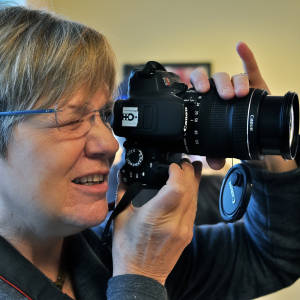Unbelievable day!!!
Today we headed north to Wakodhatchee Wetlands, an amazing birding site near Fort Lauderdale. it was beyond anything I was hoping for...I could have spent days there!!! here is a bit of info about the site....
The name, Wakodahatchee, has an interesting history. It is derived from the Seminole Indian Language and translates as "created waters." The created waters at Wakodahatchee Wetlands are an example of people giving something back to nature. Fifty acres of unused utilities land have been transformed into a wetlands ecosystem.
Every day, the Palm Beach County Water Utilities Department's Southern Region Water Reclaimation Facility pumps approximately two million gallons of highly treated water into the Wakodahatchee Wetlands. By acting as a natural filter for the nutrients that remain, the wetlands work to further clense the water.
Traditional methods for disposal of treated wastewater have included deep injection wells or ocean outfalls. More recent emphasis has been placed on highly treating and reclaiming wastewater. The Palm Beach County Water Utilities Department is a pioneer in the fields of wastewater treatment and reclaimed water distribution for irrigation purposes. The Wakodahatchee Wetlands are yet another example of the Department's innovative and forward-thinking management philosophies.
The Wakodahatchee Wetlands have attracted an abundant variety of wildlife including turtles, frogs, alligators and birds. More than 140 different species of birds have been spotted at the site. These species thrive in the various wetland zones found at Wakodahatchee Wetlands. The zones were designed for a mixture of habitat types:
Open pond water areas to attract waterfowl and diving birds
Emergent marsh areas for rails, moorhens, and sparrows
Shallow shelves for herons and egrets
Islands with shrubs and snags to serve as roosting, nesting, and basking sites
Forested wetland areas for long-term habitat development
A three-quarter mile boardwalk winds through three of the wetland's ponds, allowing visitors the opportunity to read interpretive signs and learn about water purification, wetlands ecology, natural history, and the interdependance of people and their environment.
Today we saw:
Black-bellied Whistling-Duck
anhinga
Blue heron
Cormorant
White ibis
Boat-tailed grackle
Common moorhen
American coot
yellow-rumped warbler
Least bittern
Great White egret
Green heron
Alligator
Rabbit
Turtle
Little blue heron
Tricolor end heron
Snowy egret
Black crowned heron
For more photos, visit my Flickr page!!

Comments
Sign in or get an account to comment.


